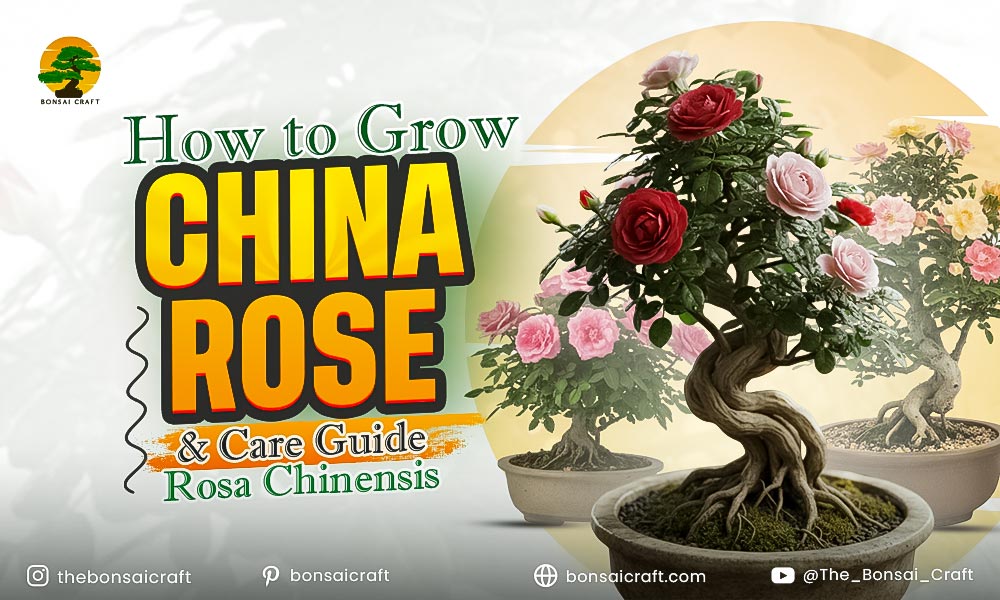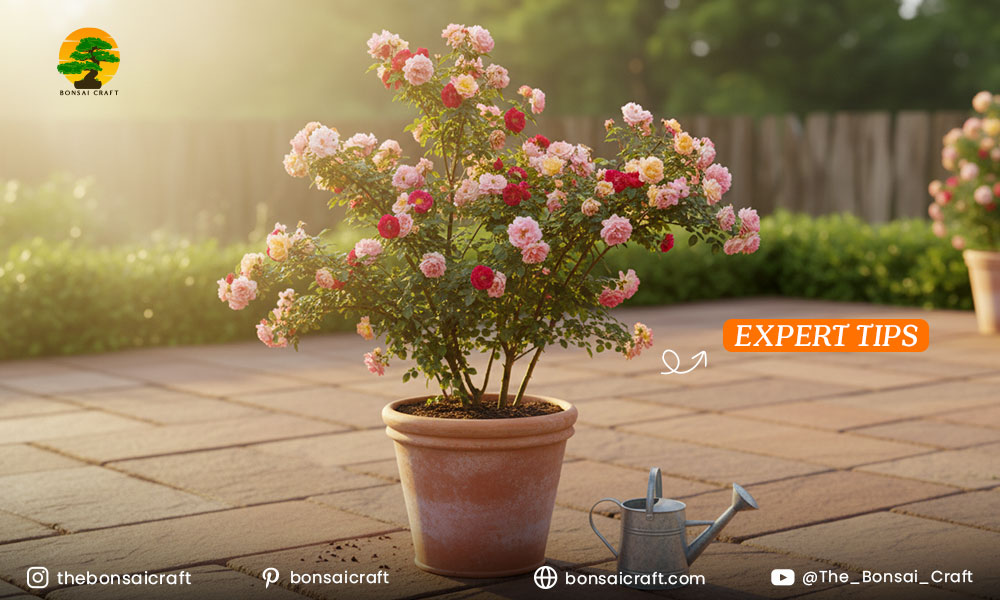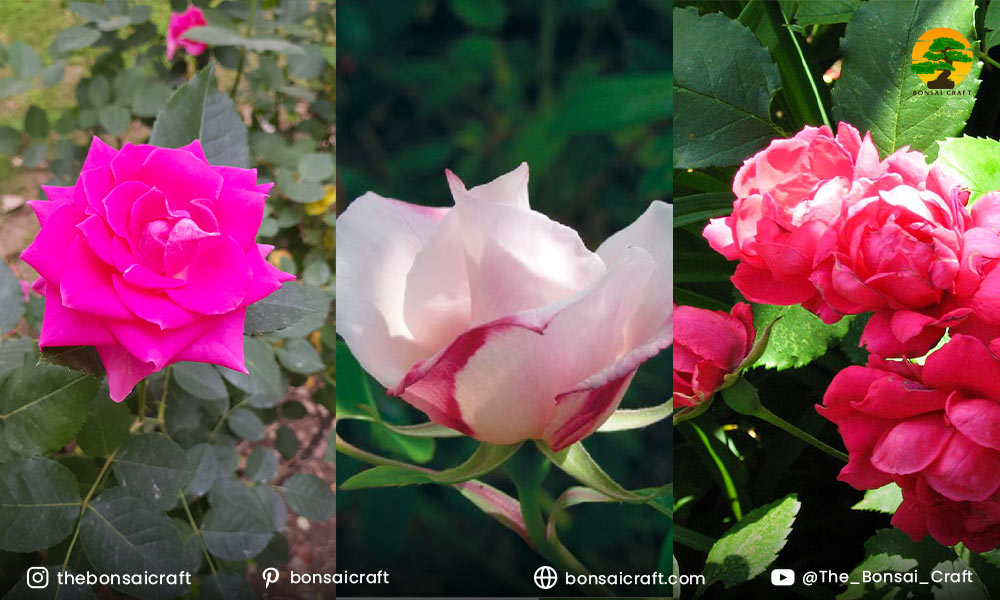
The China Rose (Rosa Chinensis) is a stunning flowering plant known for its vibrant blooms in shades of red, pink, and white. With its fragrant semi-double or single flowers, the China Rose adds a touch of beauty to any garden. Easy to grow and maintain, these plants thrive in various conditions, making them a popular choice for both novice and experienced gardeners. In this guide, we’ll walk you through how to grow and care for your China Rose, ensuring it flourishes with minimal effort.
What is China Rose? Understanding the Beauty of Rosa Chinensis
Rosa Chinensis, commonly known as the China Rose or Chinese Rose, is a perennial shrub that belongs to the Rosaceae family. Known for its lush, fragrant flowers, this plant can be found in gardens across the world, thanks to its adaptability and ease of growth.
Rosa Chinensis: The Scientific Name and Its Origins
The scientific name of the China Rose is Rosa Chinensis, a species that originated in Asia, particularly in China. This hardy plant has been cultivated for centuries, not only for its ornamental beauty but also for its medicinal and culinary uses.

Follow expert China Rose care tips to keep your Rosa chinensis thriving all season long.
How to Care for Your China Rose Plant: Expert Tips for Rosa Chinensis
Light Requirements
China Roses thrive in full sunlight. To ensure optimal growth, place your plant in a location that receives at least 6 hours of direct sunlight daily. While they can tolerate partial shade, too little sunlight can limit blooming.
Soil Type
China Roses prefer loamy or sandy, well-drained soils. They are quite adaptable and can grow in a variety of soil types, but for the best results, maintain moist, well-draining soil. The pH can range from acidic to alkaline, but a neutral pH of 6.5 to 6.9 is ideal.
Watering
Proper watering is key to a healthy China Rose. Water your plant when the top 2 inches of soil have dried out. Avoid overwatering as it can lead to root rot. During the flowering season, the plant may require more frequent watering.
Common Issues with Rosa Chinensis and How to Solve Them
Pests and Diseases
Common pests affecting China Roses include aphids, spider mites, and thrips. Prevent pest infestations by regularly inspecting your plant and using organic solutions such as neem oil. Additionally, monitor for fungal diseases like powdery mildew and black spots, which can be prevented with proper air circulation and reduced humidity.
Pruning and Maintenance
Prune your China Rose in early spring or late winter before the new growth begins. Cut back dead or damaged stems, and remove spent flowers to encourage more blooms. If you prefer a bushy form, trim back stems to an inch above the base. If training your rose as a climber, remove all but the main stems for better air circulation.

Learn how to propagate and grow China Roses from cuttings for lush, blooming plants.
How to Propagate and Grow China Roses from Cuttings
Step-by-Step Guide to Propagating Rosa Chinensis
To propagate your China Rose, cut a healthy stem about 6-8 inches long, removing the lower leaves. Place the cutting in a moist rooting medium and keep it in a shaded area. After a few weeks, roots will begin to form, and your new plant can be transferred into a larger pot or directly into the ground.
Best Time for Propagation
The best time to take cuttings for propagation is in early spring or late summer, when the plant is in active growth.
Rosa Chinensis: Uses and Benefits of the China Rose
Medicinal Uses
The China Rose has been used in traditional medicine for various purposes. The flower buds are believed to improve blood circulation and alleviate stomach pain. The seeds are rich in vitamin E, making them beneficial for skin health.
Culinary Uses
In some cultures, China Rose flowers and shoots are used in soups or cooked dishes. The seeds, after careful preparation, can also be consumed in moderation.
How to Maintain the Health and Beauty of Your China Rose (Rosa Chinensis)
Seasonal Maintenance Tips
During the winter months, reduce watering as the plant becomes dormant. Apply a slow-release fertilizer in early spring to give your China Rose the nutrients it needs to bloom profusely during the growing season.
Troubleshooting Common Issues
If your China Rose is not blooming, it may be due to insufficient sunlight or over-fertilizing. Adjust the care regimen to ensure the plant gets adequate light and nutrients.

Explore stunning China Rose varieties and find out which one suits your garden best.
China Rose Varieties: Which One Should You Grow?
Rosa Chinensis var. Chinensis
This variety is a popular choice due to its climbing habit and resilient nature. It produces beautiful dark red, pink, or white blooms and thrives when allowed to climb over structures or trellises.
Rosa Chinensis var. Spontanea
Distinct for its smaller, cupped flowers, this variety of China Rose blooms with solitary flowers and is known for its climbing nature. It prefers support from nearby structures like fences.
Rosa Chinensis var. Semperflorens Koehne
Famous for its dark red flowers, this variety blooms in small clusters and produces semi-double to double flowers. It adds rich color to any garden setting.
Decorative and Aesthetic Uses of China Roses in Landscaping
Integrating China Roses into Your Garden Design
China Roses are often used in landscaping to add a splash of color. Their vibrant flowers make them perfect for flower beds, borders, or as climbing vines on trellises and arbors.
Pairing with Other Plants
Combine China Roses with complementary plants like lavender or petunias to create a colorful and fragrant garden display.
Conclusion
China Roses (Rosa Chinensis) are beautiful, low-maintenance plants that can transform your garden. With proper care—such as adequate sunlight, well-draining soil, and regular watering—you can enjoy their vibrant blooms year after year. Additionally, the plant’s medicinal and culinary uses make it a valuable addition to any garden. Whether you’re a beginner or an experienced gardener, growing China Roses is a rewarding experience that will bring beauty and benefits to your outdoor space.
FAQs: All You Need to Know About China Roses
Is China Rose toxic?
China Roses are mildly toxic to pets, particularly dogs and cats. They contain compounds that may cause mild irritation if ingested. However, they are safe for human consumption.
Is China Rose fragrant?
Yes, Rosa Chinensis has a mildly fragrant aroma, especially during the blooming period.
How do I get my China Rose to bloom?
To encourage blooming, prune spent flowers, apply fertilizer during the growing season, and ensure the plant gets the proper sunlight and care.
